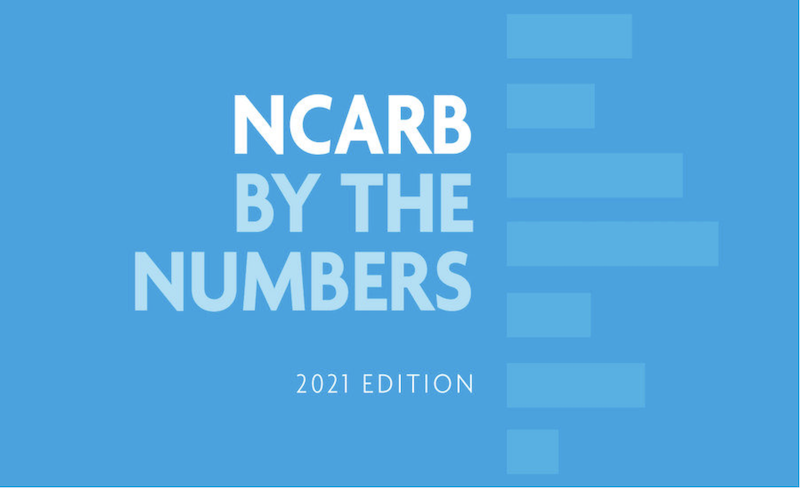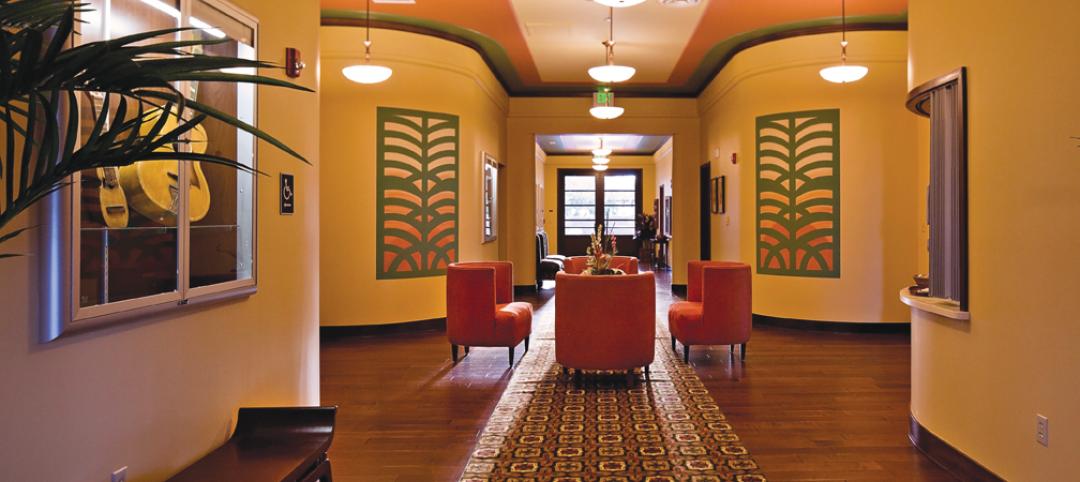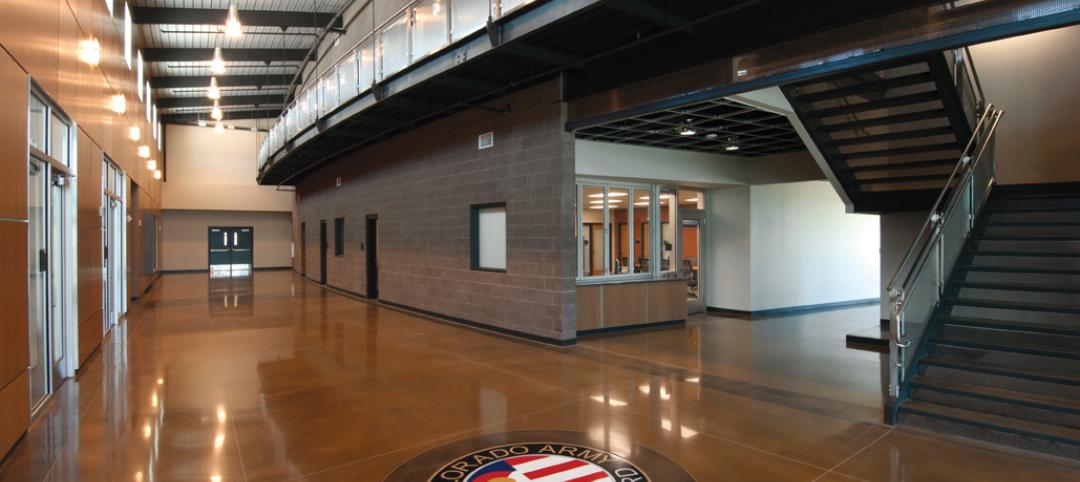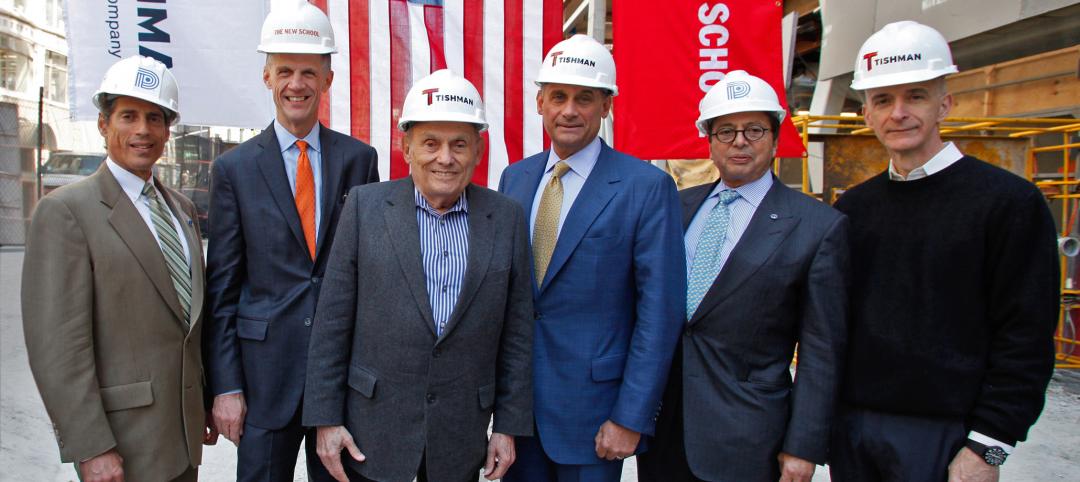On its 10th year of publishing information about its licensing exams, the National Council of Architectural Registration Boards (NCARB) for the first time has released a new section in the 2021 edition of its Architect Registration Examination that breaks down the pass rate by several demographic categories.
The six-part exam is required by all 55 NCARB jurisdictions in the U.S. for candidates seeking architectural licensure. More than 32,700 people took the test, and here are some of the key findings:
•White candidates’ pass rate is higher than that of candidates of color. The disparity is most pronounced in the Programming & Analysis division of the test that focuses on evaluating a project’s requirements and constraints; white candidates’ pass rate was 38 percentage points higher than their Black peers’.
•Men, in general, outperform women candidates on five of the exam’s six divisions. When factoring in race and ethnicity, Black women fare better on the test than Black male candidates.
•Candidates ages 18-29 have the highest pass rates across all six divisions. Candidates 40 years or older have the lowest rate.
Alfred Vidaurri Jr., FAIA, NCARB, AICP, who was inducted as NCARB’s president in June, stated that the findings were both unsurprising and unacceptable. “I challenge us to do better” he said of the industry, adding that he would concentrate on addressing these disparities during his tenure leading the organization.
The hardest part is getting some candidate groups to the finish line. NCARB reports that 63% of all candidates stay on their paths to licensure over 10 years, but that drops off to 61% for women candidates, 58% for Asian candidates, 57% for Hispanics, and 46% for Blacks.
NCARB WILL OFFER FREE PRACTICE TESTS
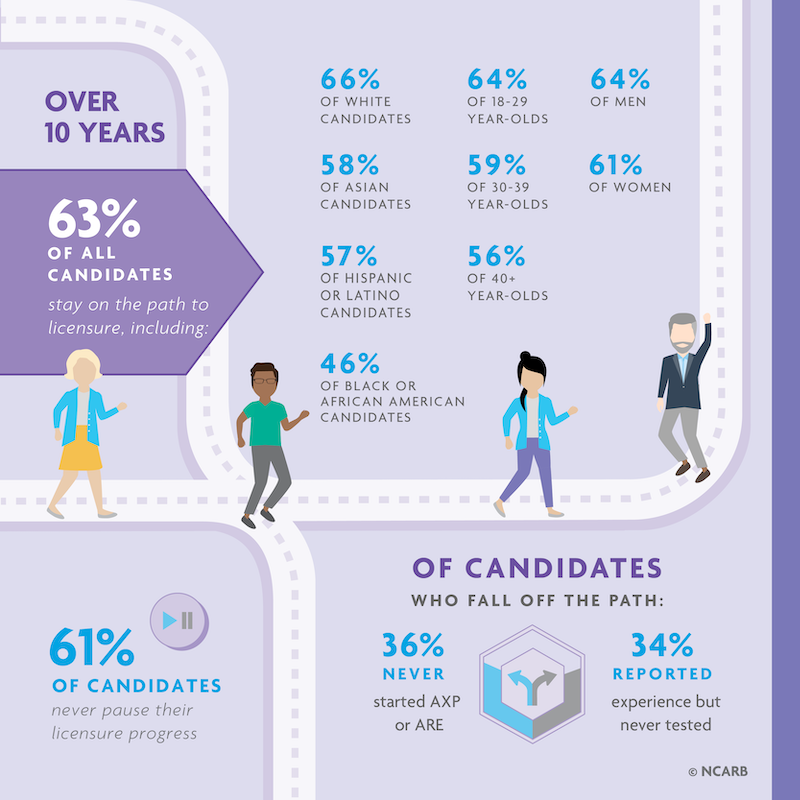
The report cites disparities in the rate of candidates pursuing licensure.
After commissioning an independent bias study of its exam, NCARB concluded that individual questions don’t drive disparities in candidates’ performance, and that the organization alone can’t resolve inequity in exam access and performance. “Coupled with NCARB’s data on career attrition, these studies suggest that pass rate disparities could also be impacted by access to education and professional experiences,” the organization stated.
Nevertheless, NCARB’s teams have been working to understand the causation of testing disparities, and the organization has pledged to launch the following changes, resources, and opportunities for feedback:
•For the first time in NCARB history, exam candidates have been appointed to the 2021 Examination Committee, which is responsible for recommending format and policy changes to NCARB’s national Board of Directors.
•NCARB is developing free practice tests for all six divisions, with a goal of offering the new suite of resources in mid-2022. (According to NCARB and the National Organization of Minority Architects’ joint Baseline on Belonging study, nearly half of respondents spent more than $500 on test prep materials.)
•NCARB is currently conducting another external audit of its exam, this time focused on the content areas to identify potential trends related to disparate pass rates.
•In addition to NCARB’s annual Think Tanks for emerging professionals and the upcoming Analysis of Practice study, the organization will launch two outreach initiatives in 2021-2022: licensure candidate focus groups conducted by an external consultant; and an Architecture Licensing Feedback survey, where the architect community can share their experience and recommendations.
•In 2019, NCARB launched an internal work group and commissioned external consultants to study licensure programs through an Equality, Diversity, and Inclusion lens. This effort is currently exploring potential links between exam performance and the criteria driving candidates’ Architectural Experience Program® (AXP®) reports, as well as firm culture.
The organization intends to release more details about these initiatives in the coming months.
Related Stories
| May 31, 2012
AIA Course: High-Efficiency Plumbing Systems for Commercial and Institutional Buildings
Earn 1.0 AIA/CES learning units by studying this article and successfully completing the online exam.
| May 31, 2012
2011 Reconstruction Award Profile: Seegers Student Union at Muhlenberg College
Seegers Student Union at Muhlenberg College has been reconstructed to serve as the core of social life on campus.
| May 31, 2012
2011 Reconstruction Awards Profile: Ka Makani Community Center
An abandoned historic structure gains a new life as the focal point of a legendary military district in Hawaii.
| May 31, 2012
5 military construction trends
Defense spending may be down somewhat, but there’s still plenty of project dollars out there if you know where to look.
| May 31, 2012
New School’s University Center in NYC topped out
16-story will provide new focal point for campus.
| May 31, 2012
Day & Zimmermann taps Jobe for ECM VP
Ken Jobe, a senior executive with 30+ years of industry-related experience, joins Day & Zimmermann to expand footprint in the process & industrial markets.
| May 31, 2012
Perkins+Will-designed engineering building at University of Buffalo opens
Clad in glass and copper-colored panels, the three-story building thrusts outward from the core of the campus to establish a new identity for the School of Engineering and Applied Sciences and the campus at large.
| May 30, 2012
Construction milestone reached for $1B expansion of San Diego International Airport
Components of the $9-million structural concrete construction phase included a 700-foot-long, below-grade baggage-handling tunnel; metal decks covered in poured-in-place concrete; slab-on-grade for the new terminal; and 10 exterior architectural columns––each 56-feet tall and erected at a 14-degree angle.
| May 30, 2012
Pringle Brandon in discussions to join forces with Perkins+Will
The London offices would be known as Pringle Brandon Perkins+Will.


